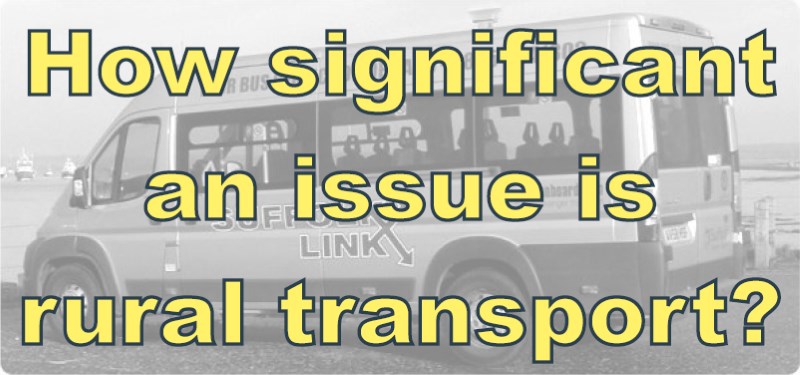T: 01822 851370 E: [email protected]
Visit RSN Survey about life in rural England to find out more.
How significant an issue is rural transport?
 Launched at the House of Commons in January 2017, the State of Rural Services 2016 Report, not surprisingly, concludes that public and private sector service provision is reducing in rural areas – broadly due to a combination of austerity and competitive pressures. Community action has increased and plays a growing role but the ever-ageing nature of the rural population will, the report points out, continue to pile on additional pressures. This is especially the case in relation to transport.
Launched at the House of Commons in January 2017, the State of Rural Services 2016 Report, not surprisingly, concludes that public and private sector service provision is reducing in rural areas – broadly due to a combination of austerity and competitive pressures. Community action has increased and plays a growing role but the ever-ageing nature of the rural population will, the report points out, continue to pile on additional pressures. This is especially the case in relation to transport.
The report, an objective assessment of existing research and available national data sources, points to 2 services currently at particular risk of cutbacks – local buses and bank branches. The loss of bus services, of course, affects access to a whole range of other services. Nationally, 49% of households in smaller rural settlements (villages) have access to a regular bus service – which means 51% do not. In 2015/16 (alone) the report identifies that 124 bus services were withdrawn and 248 reduced / altered. The largest cuts were to subsidised services in shire areas.
For younger people, only half of rural users can get to a FE College by public transport or walking in a 'reasonable travel time' (as defined by the Department for Transport) and just 39% of rural users can get to a school sixth form by public transport or walking in a 'reasonable travel time' (and that transport may be infrequent).
Physical outlets for a wide range of services are declining, Take-up of online service provision, of course, is identified as growing and with real scope to impact positively on service accessibility – but there are clear issues associated with those not online or with poor broadband speeds. In addition, the report raises the question as to whether the growth of online services is contributing to the reduction in physical service outlets, further marginalising those who struggle to access online services and those with access to transport provision.
You can read more detail on this report here.



